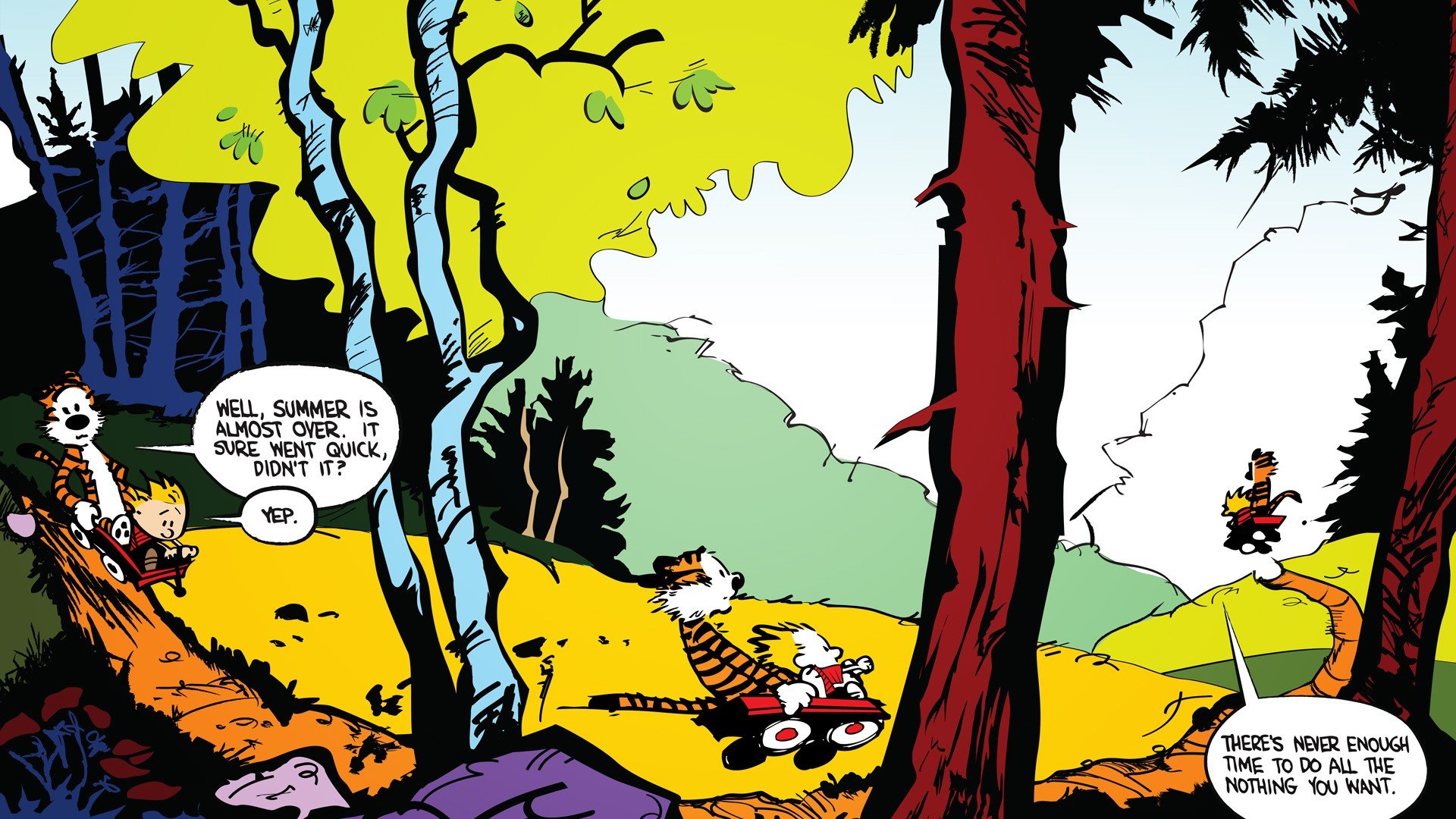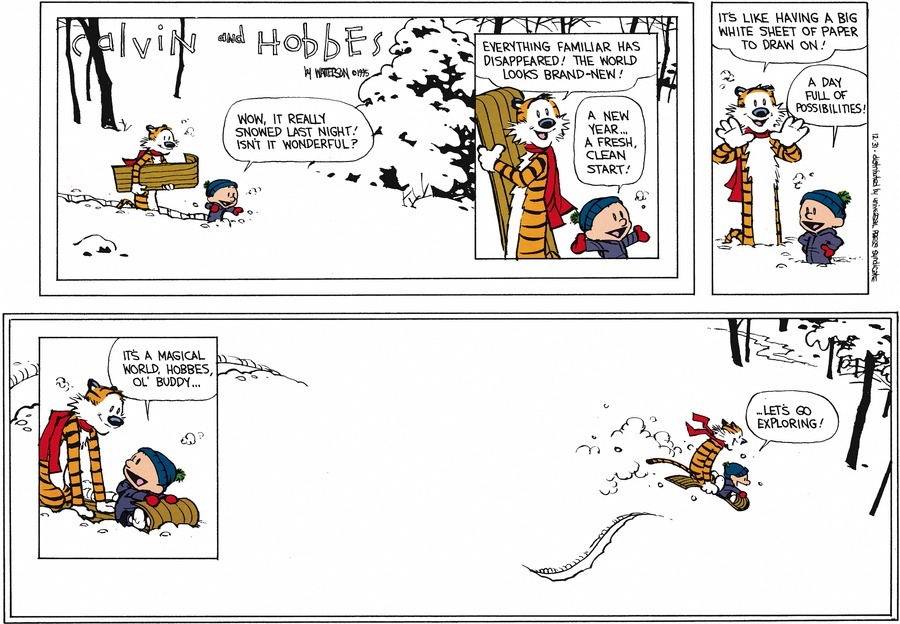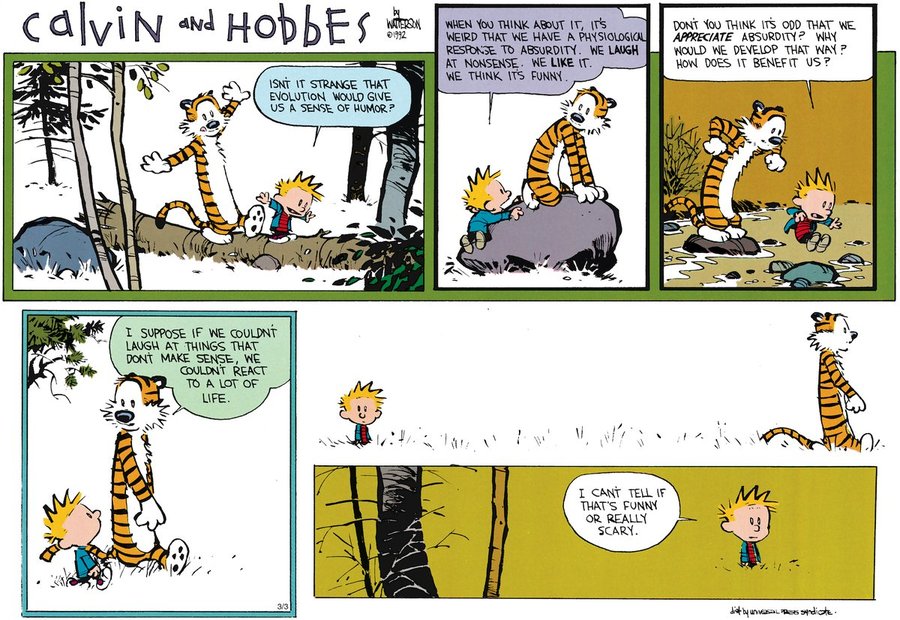When it comes to understanding the human condition, sometimes the simplest perspectives hold the most profound truths. Enter Calvin and Hobbes, a comic strip created by Bill Watterson that has transcended its original purpose as mere entertainment to become a philosophical cornerstone for readers of all ages. At its core, Calvin and Hobbes philosophy is about exploring life’s complexities through the eyes of a mischievous 6-year-old boy and his stuffed tiger. But don’t let the playful nature fool you—there’s a depth here that resonates with anyone willing to look closer.
Calvin and Hobbes isn’t just a comic strip; it’s an invitation to rethink how we approach the world. Through their adventures, Bill Watterson delves into existentialism, the nature of reality, friendship, and even the role of imagination in shaping our lives. It’s this unique blend of humor and philosophy that makes the strip so timeless.
As we dive deeper into the philosophy behind Calvin and Hobbes, you’ll discover that it’s not just about laughs—it’s about learning. So, whether you’re a fan of the strip or someone curious about its intellectual underpinnings, this article will take you on a journey through the philosophical landscape of one of the most beloved comics of all time.
Read also:Sione Papalii Fitisemanu The Rising Star In The World Of Music
Table of Contents
- Calvin and Hobbes: A Brief Biography
- The Role of Imagination in Calvin and Hobbes Philosophy
- Existential Themes in Calvin and Hobbes
- Exploring Reality and Perception
- The Power of Friendship
- Creativity as a Form of Rebellion
- Childhood as a Lens for Understanding Life
- The Critique of Adult Society
- The Art of Storytelling in Comics
- The Lasting Legacy of Calvin and Hobbes
Calvin and Hobbes: A Brief Biography
Before we delve into the philosophical aspects of Calvin and Hobbes, let’s take a moment to meet the main characters. Calvin, a precocious 6-year-old with an overactive imagination, and Hobbes, his stuffed tiger who comes to life in Calvin’s world, form the heart of the comic strip. But there’s more to them than meets the eye.
Bill Watterson created Calvin and Hobbes in 1985, and for nearly a decade, the strip ran in newspapers worldwide. During that time, it became a cultural phenomenon, earning critical acclaim and a loyal fanbase. The strip ended in 1995, but its impact continues to resonate.
Character Details
| Name | Role | Personality Traits |
|---|---|---|
| Calvin | Protagonist | Imaginative, curious, mischievous |
| Hobbes | Stuffed Tiger (alive in Calvin's reality) | Witty, loyal, adventurous |
What sets Calvin and Hobbes apart is the dual reality they inhabit. To Calvin, Hobbes is a real, sentient tiger. To everyone else, he’s just a stuffed toy. This dichotomy serves as a springboard for exploring themes of perception and truth.
The Role of Imagination in Calvin and Hobbes Philosophy
Imagination is at the heart of Calvin and Hobbes philosophy. Calvin’s boundless creativity allows him to transform the mundane into the extraordinary. Whether he’s piloting a cardboard box spaceship or battling dinosaurs in his backyard, Calvin shows us the power of imagination to reshape reality.
Watterson uses this theme to highlight the importance of creativity in our lives. In a world that often prioritizes logic and reason, Calvin reminds us that there’s value in embracing the unknown and letting our minds wander.
- Calvin’s inventions, like the Transmogrifier and the Duplicator, symbolize the endless possibilities of human ingenuity.
- His alter egos, such as Spaceman Spiff and Stupendous Man, demonstrate how imagination can empower us to confront challenges.
This emphasis on imagination extends beyond the strip, encouraging readers to explore their own creative potential.
Read also:Inside The Corporate Office For Walmart A Closer Look At The Backbone Of The Retail Giant
Existential Themes in Calvin and Hobbes
For a comic strip aimed at children, Calvin and Hobbes tackles some surprisingly heavy existential questions. Through Calvin’s musings, Watterson explores the meaning of life, the nature of existence, and the human condition.
One of the most famous strips features Calvin contemplating the inevitability of death. While this might seem grim, it’s actually a poignant reminder of life’s fragility and the importance of living fully. Calvin’s philosophical musings often serve as a mirror, reflecting our own struggles to find meaning in a complex world.
Key Existential Questions
- What is the purpose of life?
- How do we define reality?
- Can we truly understand the universe?
By presenting these questions in a lighthearted yet thought-provoking manner, Watterson invites readers to engage with philosophy in a way that feels accessible and relatable.
Exploring Reality and Perception
One of the most fascinating aspects of Calvin and Hobbes philosophy is its exploration of reality and perception. The strip’s dual reality—Calvin’s world versus the world as others see it—raises important questions about the nature of truth.
Is reality objective, or is it shaped by our individual perspectives? Calvin and Hobbes suggest that our perception of the world is deeply personal and subjective. This idea challenges readers to consider how their own biases and experiences influence their understanding of reality.
Through this lens, Watterson highlights the importance of empathy and open-mindedness. By recognizing that others may perceive the world differently, we can foster greater understanding and connection.
The Power of Friendship
At its core, Calvin and Hobbes is a story about friendship. Despite their occasional disagreements, Calvin and Hobbes share a bond that transcends the boundaries of imagination and reality. Their adventures together remind us of the importance of companionship and trust.
Friendship, as depicted in the strip, is not just about shared experiences; it’s about mutual respect and support. Hobbes, with his wisdom and wit, serves as a foil to Calvin’s impulsiveness, creating a dynamic that feels both authentic and endearing.
This portrayal of friendship resonates with readers of all ages, reminding us that even the most unlikely partnerships can lead to meaningful connections.
Creativity as a Form of Rebellion
Calvin’s creativity is not just a source of entertainment; it’s a form of rebellion against the constraints of adult society. In a world that often values conformity, Calvin embraces his individuality and refuses to conform to societal expectations.
Through his imaginative escapades, Calvin challenges the status quo and encourages others to do the same. Watterson uses this theme to critique the rigid structures that stifle creativity and innovation. By celebrating Calvin’s unconventional approach to life, the strip inspires readers to think outside the box and embrace their unique perspectives.
Childhood as a Lens for Understanding Life
Calvin and Hobbes philosophy often uses childhood as a lens to explore broader life lessons. Through Calvin’s innocent yet insightful observations, Watterson sheds light on the complexities of adulthood in a way that feels both humorous and profound.
Childhood, as portrayed in the strip, is a time of discovery and wonder. It’s a period when the world is full of possibilities, and every experience is a chance to learn and grow. By revisiting this perspective, readers are encouraged to recapture the curiosity and enthusiasm of their younger selves.
This focus on childhood serves as a reminder that we never truly outgrow the need for wonder and exploration.
The Critique of Adult Society
While Calvin and Hobbes is primarily about childhood, it also offers a biting critique of adult society. Through Calvin’s interactions with authority figures like his parents and teachers, Watterson highlights the absurdities and injustices of the adult world.
Issues like consumerism, environmental destruction, and the pressure to conform are all addressed in the strip, often with a touch of humor. This critique serves as a wake-up call, urging readers to question the values and systems that govern their lives.
By presenting these critiques through the eyes of a child, Watterson ensures that they remain accessible and impactful, without becoming overly preachy.
The Art of Storytelling in Comics
Calvin and Hobbes philosophy extends beyond its content to include the art of storytelling itself. Bill Watterson’s innovative use of the comic strip format broke new ground in the world of comics. He rejected the standard three-panel structure, opting instead for layouts that allowed for greater creativity and expression.
This approach not only enhanced the storytelling but also elevated the medium of comics as a legitimate form of artistic expression. Watterson’s dedication to quality and his refusal to license the characters further solidified his reputation as a visionary in the industry.
Through his work, Watterson demonstrated that comics could be more than just entertainment—they could be a vehicle for exploring complex ideas and emotions.
The Lasting Legacy of Calvin and Hobbes
Even decades after its conclusion, Calvin and Hobbes continues to captivate audiences worldwide. Its enduring popularity speaks to the universal appeal of its themes and the timeless nature of its philosophy.
Calvin and Hobbes philosophy reminds us to embrace our inner child, to question the world around us, and to find joy in the simplest moments. It’s a message that resonates with people of all ages and backgrounds, making it one of the most beloved comic strips in history.
As we look to the future, the legacy of Calvin and Hobbes serves as a testament to the power of storytelling and the enduring impact of great art.
Conclusion
Calvin and Hobbes philosophy is more than just a comic strip—it’s a celebration of life’s complexities and wonders. From its exploration of imagination and existence to its critique of adult society, the strip offers a wealth of insights that continue to inspire and challenge readers.
So, the next time you find yourself pondering life’s big questions, remember Calvin and Hobbes. Let their adventures remind you to embrace your creativity, cherish your friendships, and never stop questioning the world around you.
And hey, if you enjoyed this dive into Calvin and Hobbes philosophy, why not share it with a friend? Or better yet, revisit some of your favorite strips and rediscover the magic for yourself. After all, as Calvin once said, “Life is an adventure. Let’s go exploring!”



